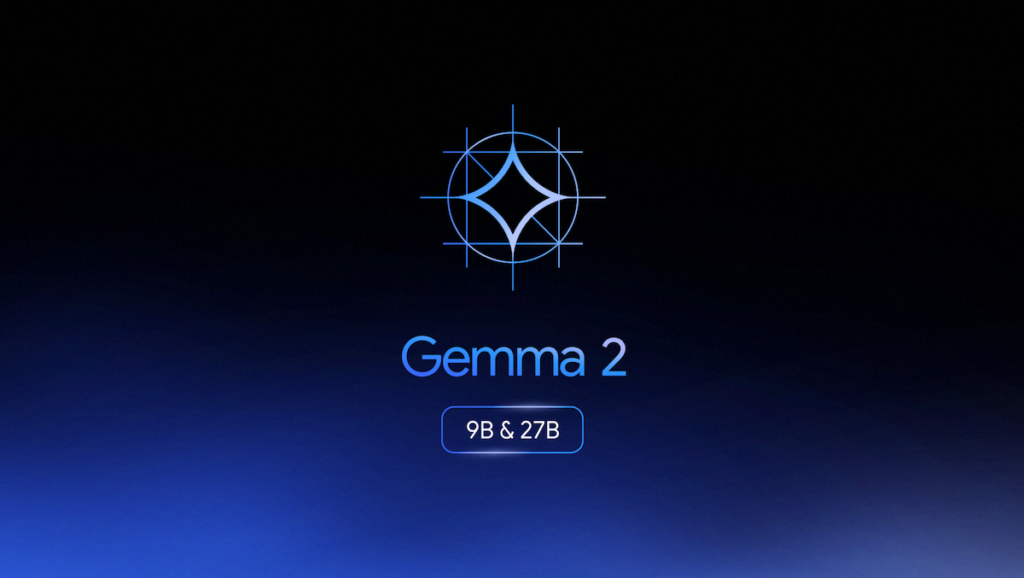Google’s Gemma 2 series marks a significant leap forward in the realm of AI language processing. Introduced with both 9 billion (9B) and 27 billion (27B) parameter options, Gemma 2 represents a new standard in efficiency, performance, and accessibility for developers and researchers worldwide.
At its core, Gemma 2 is designed to address the growing demand for powerful yet lightweight AI models capable of handling complex tasks across diverse applications. Developed as successors to the earlier Gemma models, which debuted earlier this year, Gemma 2 leverages state-of-the-art technology to deliver enhanced capabilities in AI language processing. This article explores the technical specifications, innovations, applications, and future implications of Google’s Gemma 2 series.
Gemma 2 Models Overview
Google’s decision to release both 9B and 27B parameter models under the Gemma 2 series reflects its commitment to catering to a wide range of AI development needs. These models build upon the success of their predecessors by offering improved performance and efficiency. The 27B model, for instance, excels in handling intricate language tasks, providing greater accuracy and depth of understanding. In contrast, the 9B model focuses on computational efficiency, making it ideal for applications where speed and resource utilization are critical.
Technical Specifications and Innovations
The technical prowess of Gemma 2 extends beyond its parameter sizes. The models are equipped with advanced features such as Rotary Position Embeddings (RoPE) and interleaving attention layers, which enhance their ability to process long sequences of data while maintaining inference stability. Moreover, Google’s use of knowledge distillation techniques has optimized the efficiency and performance of the smaller 9B and 2B models, ensuring they deliver competitive results despite their reduced size.
Training and Architecture
Both the 27B and 9B Gemma 2 models were trained on vast amounts of data—13 trillion tokens for the former and 8 trillion tokens for the latter. This extensive training enables the models to capture nuanced language patterns and context, essential for applications ranging from customer service automation to educational tools. The architecture of Gemma 2 reflects a careful balance between performance and resource efficiency, leveraging cutting-edge hardware like NVIDIA GPUs and TPUs for accelerated inference.

Applications and Use Cases
The versatility of Gemma 2 opens doors to diverse applications across industries. In customer service automation, these models offer high accuracy and efficiency in handling queries and providing personalized responses. For content creation, Gemma 2 facilitates the generation of high-quality written material, including articles, blogs, and creative content. Language translation benefits from Gemma 2’s advanced language understanding capabilities, ensuring precise and contextually appropriate translations. Educational tools can also leverage Gemma 2 to enhance learning experiences through personalized tutoring and language learning applications.
Deployment and Accessibility
Accessibility is a key factor in Gemma 2’s adoption strategy. Google has made these models available through platforms like Google AI Studio, Kaggle, and Hugging Face, ensuring easy integration with popular AI frameworks such as TensorFlow and PyTorch. Developers and researchers can access Gemma 2 for experimentation and deployment, supported by Google Cloud services like Vertex AI for scalable and efficient model management.
Future Developments
Looking ahead, Google plans to expand the Gemma 2 series with future releases, including a 2.6B parameter model aimed at bridging the gap between lightweight accessibility and powerful performance. These developments underscore Google’s ongoing commitment to advancing AI technology and driving innovation across various sectors. As Gemma 2 continues to evolve, its impact on AI development is expected to grow, influencing the way businesses and industries leverage AI to improve efficiency and innovation.
Conclusion
Google’s Gemma 2 series represents a significant milestone in AI language processing, combining state-of-the-art technology with practical applications across diverse industries. The introduction of 9B and 27B parameter models showcases Google’s dedication to meeting the complex demands of AI developers and researchers worldwide. As these models become more widely adopted, they are poised to redefine standards in AI capabilities, driving transformative changes in how we interact with technology and leverage AI for business and societal advancement.
Google’s Gemma 2 series stands at the forefront of AI innovation, promising a future where intelligent, efficient, and accessible AI models pave the way for new possibilities and advancements.




